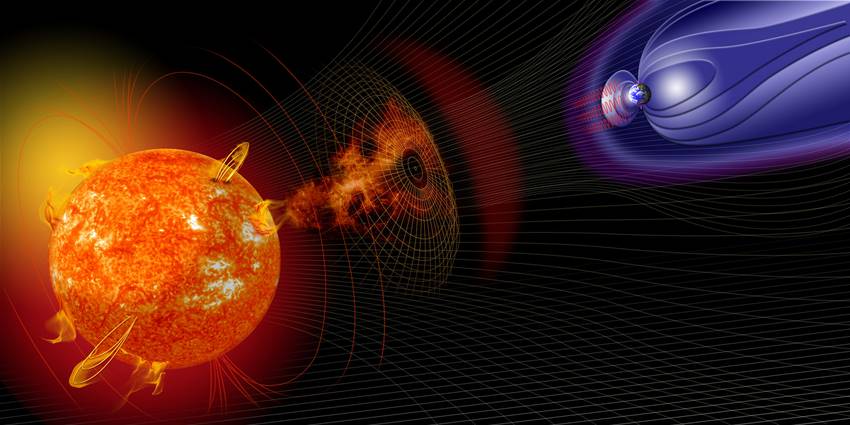
Since the beginning of human history, mankind had to face vagaries of the weather: hunters and farmers faced with heavy rains, snowfalls, and floodings, sailors faced with strong winds and sea tempests, and pilots faced with clouds and wind shear.
Thus now, after men started the space adventure, we had to cope with a more dangerous environment, the extra atmospheric one where radiations are lethal for most living beings, apart from viruses, and extreme bacteria able to survive deep space travels.
Space weather refers to the conditions in space that can have an impact on technological systems, such as satellites, GPS, and power grids, as well as the health and safety of astronauts. These conditions are primarily driven by the sun and its activity, including solar flares, coronal mass ejections (CMEs), and high-speed solar wind.
Solar flares are sudden, intense bursts of radiation that can release as much energy as millions of atomic bombs. They are caused by the release of magnetic energy in the sun's atmosphere, and they can produce strong electromagnetic fields that can interfere with electronics on Earth. For example, they can disrupt satellite communications and cause blackouts in power grids. They can also pose a health risk to astronauts who are outside the Earth's protective magnetic field.
CMEs are massive eruptions of gas and magnetic fields from the sun that can travel through space and interact with the Earth's magnetic field. When they collide with the magnetic field, they can cause disturbances in the Earth's atmosphere that can affect radio communications and power grids. They can also produce stunning displays of auroras or northern lights.
The high-speed solar wind is a stream of charged particles that flows from the sun and can travel at speeds of up to 500 km/s. When it interacts with the Earth's magnetic field, it can cause geomagnetic storms, which can produce auroras and disrupt power grids, satellite communications, and GPS systems.
The study of space weather is important because it can help us understand and mitigate the risks associated with solar activity. Space weather forecasting is similar to weather forecasting on Earth, but it is much more challenging because of the complex interactions between the sun and the Earth's magnetic field. Space weather forecasts are used by space agencies, power companies, and other industries to prepare for and mitigate the effects of solar activity.
In addition to its practical applications, space weather is also an important area of scientific research. Studying the sun and its activity can help us understand the origins and evolution of our solar system, as well as the physics of plasmas and magnetic fields. It can also help us understand the habitability of planets around other stars, as solar activity can affect the atmospheric and magnetic environments of those planets.
In conclusion, space weather refers to the conditions in space that can have an impact on technological systems and the health and safety of astronauts. Solar flares, CMEs, and high-speed solar wind are the primary drivers of space weather, and they can cause disruptions to power grids, satellite communications, and GPS systems.
Studying and forecasting space weather is important for mitigating these risks, as well as for advancing our understanding of the sun and the physics of plasmas and magnetic fields.





